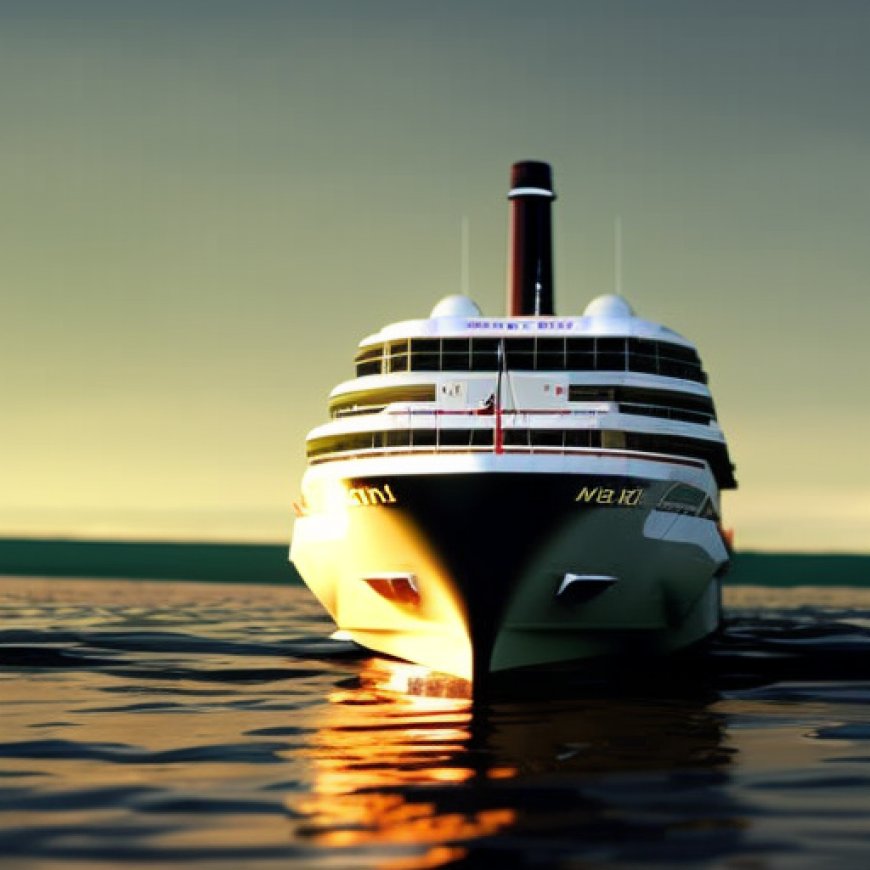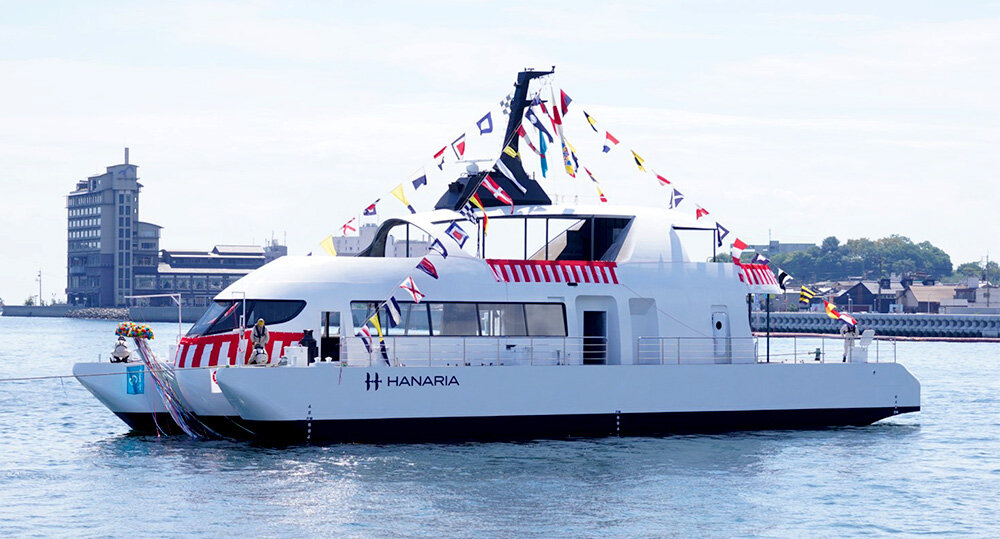MOL: Japan’s 1st hydrogen, biofuel hybrid passenger ship launched
MOL: Japan's 1st hydrogen, biofuel hybrid passenger ship launched Offshore Energy


Japanese Shipping Major MOL Launches Japan’s First Hybrid Passenger Ship
Mitsui O.S.K. Lines (MOL), a Japanese shipping major, recently held a naming and launching ceremony for Japan’s first hybrid passenger ship. The vessel, named Hanaria, was ordered by MOL’s company MOTENA-Sea. The ceremony took place at Hongawara Ship Yard Co. on September 13th.
Key Specifications
- Length: 33 meters
- Width: 10 meters
- Draft: 1.4 meters
- Speed: 10.5 knots
Sustainable Development Goals (SDGs)
The hybrid passenger ship is expected to contribute significantly to the achievement of the Sustainable Development Goals (SDGs) by reducing carbon dioxide (CO2) emissions. It will introduce a system that allows the selection of different operating modes, including hydrogen fuel cells, lithium-ion batteries, and biodiesel fuel. This system is the first of its kind in Japan and is projected to reduce CO2 emissions by 53%-100% compared to conventional fossil fuel vessels.
Delivery and Service
The Hanaria is scheduled to be delivered in March 2024 and will start servicing in Fukuoka Prefecture in April 2024.

MOL and Shell Collaborate on Alternative Maritime Solutions
MOL recently announced a collaboration with Shell to advance alternative maritime solutions and manage carbon emissions liabilities holistically. As part of this agreement, the two companies will conduct joint trials to explore the viability of bio- and synthetic fuel options as realistic decarbonization pathways. They will also assess the effectiveness of these fuels within the context of carbon markets.
SDGs, Targets, and Indicators
| SDGs | Targets | Indicators |
|---|---|---|
| SDG 7: Affordable and Clean Energy | Target 7.2: Increase the share of renewable energy in the global energy mix | Indicator not mentioned in the article |
| SDG 9: Industry, Innovation, and Infrastructure | Target 9.4: Upgrade infrastructure and retrofit industries to make them sustainable | Indicator not mentioned in the article |
| SDG 13: Climate Action | Target 13.2: Integrate climate change measures into national policies, strategies, and planning | Indicator not mentioned in the article |
| SDG 14: Life Below Water | Target 14.1: Prevent and significantly reduce marine pollution of all kinds | Indicator not mentioned in the article |
| SDG 15: Life on Land | Target 15.5: Take urgent and significant action to reduce degradation of natural habitats | Indicator not mentioned in the article |
1. Which SDGs are addressed or connected to the issues highlighted in the article?
- SDG 7: Affordable and Clean Energy
- SDG 9: Industry, Innovation, and Infrastructure
- SDG 13: Climate Action
- SDG 14: Life Below Water
- SDG 15: Life on Land
The article discusses the development of Japan’s first hybrid passenger ship that uses hydrogen and biodiesel fuels. This is connected to SDG 7 (Affordable and Clean Energy) as it promotes the use of renewable energy sources. It is also connected to SDG 9 (Industry, Innovation, and Infrastructure) as it involves the development of sustainable infrastructure. Additionally, the reduction of carbon dioxide emissions aligns with SDG 13 (Climate Action), the prevention of marine pollution aligns with SDG 14 (Life Below Water), and the reduction of degradation of natural habitats aligns with SDG 15 (Life on Land).
2. What specific targets under those SDGs can be identified based on the article’s content?
- Target 7.2: Increase the share of renewable energy in the global energy mix
- Target 9.4: Upgrade infrastructure and retrofit industries to make them sustainable
- Target 13.2: Integrate climate change measures into national policies, strategies, and planning
- Target 14.1: Prevent and significantly reduce marine pollution of all kinds
- Target 15.5: Take urgent and significant action to reduce degradation of natural habitats
Based on the article’s content, the specific targets that can be identified are increasing the share of renewable energy in the global energy mix (Target 7.2), upgrading infrastructure and retrofitting industries to make them sustainable (Target 9.4), integrating climate change measures into national policies, strategies, and planning (Target 13.2), preventing and significantly reducing marine pollution of all kinds (Target 14.1), and taking urgent and significant action to reduce degradation of natural habitats (Target 15.5).
3. Are there any indicators mentioned or implied in the article that can be used to measure progress towards the identified targets?
No, the article does not mention or imply any specific indicators that can be used to measure progress towards the identified targets.
Behold! This splendid article springs forth from the wellspring of knowledge, shaped by a wondrous proprietary AI technology that delved into a vast ocean of data, illuminating the path towards the Sustainable Development Goals. Remember that all rights are reserved by SDG Investors LLC, empowering us to champion progress together.
Source: offshore-energy.biz

Join us, as fellow seekers of change, on a transformative journey at https://sdgtalks.ai/welcome, where you can become a member and actively contribute to shaping a brighter future.







